Godzilla 2000 (1999)
Directed by: Takao Okawara
Written by: Hiroshi Kashiwabara, Wataru Mimura
Starring: Hiroshi Abe, Mayu Suzuki, Naomi Nishida, Takehiro Murata
HCF REWIND NO. 188: GODZILLA 2000 AKA GODZILLA MILLENNIUM, GOJIRA NI-SEN MIRENIAMU [Japan 1999]
AVAILABLE ON DVD
FEATURED MONSTERS: GODZILLA, ORGA
RUNNING TIME: 107 min/ 99 min [US version]
REVIEWED BY: Dr Lenera, Official HCF Critic
A lighthouse picks up word of a missing fishing vessel, the whereabouts of which are quickly revealed as Godzilla appears with the ship still locked between his jaws. The creature ploughs his way through a neighbouring town and tears apart the local nuclear power plant. Yuji Shinoda, head of the self proclaimed Godzilla Prediction Network, sees the destruction and comes to the conclusion that the creature must have the motive to destroy all of humankind’s energy sources. Meanwhile, the government-ran Crisis Control Intelligence Agency has discovered a mammoth rock in an underwater trench which has levitated itself to the surface, but their investigation is interrupted by Godzilla. The CCI and the GPN debate what to do and the CCI wins the argument, but the military’s assault on Godzilla is interrupted by the mysterious rock, which has taken flight….
I have very strong memories of watching my imported Hong Kong DVD of Toho’s revival of the Godzilla franchise after buying it back from Tri-Star following the horrible 1998 film, and being immensely disappointed in what I saw. Here was Toho’s chance to show people what a Godzilla film should really be, and they dropped the ball somewhat. What on earth was a Toho movie doing copying scenes from the American disaster? Why was Godzilla realised in a suit so stiff that the guy inside could barely turn his head? Why did the opposing monster only appear in the last fifteen minutes, seeming like an afterthought? These questions and others puzzled me as I also worried that the film’s projected US theatrical release, the first since 1984’s The Return Of Godzilla, would have poor word of mouth and fail to attract a wider audience besides Godzilla fans who wanted to see their hero on the big screen. In retrospect, Godzilla 2000 is not that bad, and is in parts actually very entertaining, but it also has lots of poor sections and often doesn’t seem to want to give fans what they want. It’s terribly paced, with a slow middle section book-ended by action-packed opening and closing sections. It also feels quite American, something done no doubt for the US market but meaning that for much of the time the film lacks the imaginative craziness expected, though the special effects are often surprisingly poor. While there is still fun to be had, it’s definitely one of the weakest Japanese Godzilla films.
So the Tri-Star film was a failure, though Roland Emmerich and Dean Devlin did consider two sequels before thankfully changing their mind. The crew for Toho’s new effort was a mixture of old and new talent. Producer Shogo Tomoyama, Tomoyuki Tanaka having passed away, had executive produced all the films in the Heisei series, writers Wataru Mimura and Hiroshi Kashiwabara had scripted Godzilla Vs Mechagodzilla and Godzilla Vs Space Godzilla respectively, and director Takao Okawara had helmed Godzilla Vs Mothra, Godzilla Vs Mechagodzilla and Godzilla Vs Destroyer, though the technical side of things was handled by newcomers, and now made far greater use of CGI with 500 CGI shots in the film, including even a full CGI Godzilla for underwater scenes. This all sounds like it ought to have resulted in a great throwback to the older films with some new and fresh aspects poured on top and even a bit of modernising that would still remain respectful to Godzilla’s past, but for some reason none of this failed to happen in any great quantity. The first script had old Godzilla foes Angilas and King Seezer battle Godzilla until the writers hit upon the idea of capitalising on the fears people had of the impending Millennium, and the rest fell into place. On 15 July 1999, Toho broadcast two hours of the film’s production on the internet, the first time people got to see the new Godzilla suit, just a day before the press presented more official photos of it. The film was a commercial failure though. The eight minute shorter US version made many alterations and actually improved the film [more of this at the bottom of this review], though it still failed to grab the public interest.
Godzilla 2000 certainly opens well, giving us a fabulous entrance for its star. The rain and wind help give the scene a strong and rather dark atmosphere as people in a ship see another ship pass by….only it’s shown to be actually in Godzilla’s mouth as the camera pulls back and then zooms back into his eye, out of which the movie title comes out! Great stuff, and it really makes you think this film may kick ass. Godzilla then stomps through a village, though the actual destruction caused is disappointingly minimal. There’s also a funny use of the famous Buster Keaton gag where a building falls on someone but he isn’t injured.The script is already revealed to be weak though when Godzilla is said to be on a mission to destroy mankind’s energy resources [why?] and no attempt is made to tie this Godzilla to previous incarnations, with no talk of earlier appearances. I assumed that it was Junior at the end of Godzilla Vs Destroyer now grown into a full Godzilla. The story quickly sets up a conflict between ‘good’ and ‘bad’ human organisations, with a hero and a villain who want to study and destroy Godzilla respectively, though we’re not told why in either case, and begins to introduce another subplot involving a big alien rock that flies. Godzilla, the rock and the military all converge, and we have a really disappointing and rather boring action scene where the army fire and fire upon Godzilla who fails to retaliate – he doesn’t destroy one thing. Eventually he’s repelled with a special penetrative missile, but then the rock appears, and we now have the embarrassing sight of Godzilla briefly battling the bloody rock, which of course fires a beam and actually defeats Godzilla.
This first half an hour is breathlessly paced, but after this the film slows down considerably. Godzilla disappears from the screen and it’s basically about little more than the rock, which is revealed to be an alien spacecraft. It collects data, destroys a few helicopters and sits on top of Tokyo’s City Tower, but little really happens for ages and some scenes are stretched out as it becomes obvious that the writers are just trying to pad out their slender story. They even insert moments of repeated slapstick, like a man being repeatedly hit on the head by a plank. There’s not nearly enough suspense as the countdown to the millennium begins and it’s revealed that aliens want to take over the world, except that we don’t see any aliens until the building is destroyed. Some tentacles come out of the ground to attack Godzilla, a weird CGI thing slithers out into the ground, then out comes Orga, which looks like a cross between the Rancor from Return Of The Jedi and the Predator, but with huge hands which hardly do anything. At least Godzilla 2000 has now remembered it’s a Godzilla film. The resulting battle is static like most of the Heisei ones, but there’s a hell of a lot of destruction, which makes up for the shortage of building smashing earlier, and an interesting bit where Orga actually tries to swallow Godzilla. The ending is open as the last shot is of Godzilla still loose and wrecking everything in sight. No ambiguous retreat to the sea here, Godzilla’s still at it.
Godzilla, played by Tsutomi Kitagawa, is actually green for once here. Four suits were made from the new design, with its huge mouth with razor sharp teeth, expanded neck, big eyes, and taller dorsal fins with pink edges which light up more with his breath. It looks quite formidable from a distance, but seems ungainly closer up. Nor does he seem to have much personality, even when he faces off with one of the human characters in a bit ripped off from Godzilla Vs King Ghidorah, but with none of that scene’s emotion. Godzilla, who kept getting bigger in the Heisei films, is now only 170 feet which allows for more detail in the miniatures, but sadly Kenji Suzuki’s special effects are often disappointing and at times even inferior to those in the Heisei films. The matting which pastes Godzilla into shots is sometimes glaringly poor, and Godzilla would rather smash matted-in buildings at a distance rather than models, but the real villain is the CGI. The UFO, in whatever form, never looks like it’s part of the film and the explosion of City Tower is simply embarrassing, it’s just like watching a computer game. The difference in look between the CGI and practical stuff really jars. And then there’s the copying from the 1998 film, with digging around in the monster’s footsteps, Godzilla chasing our heroes in a tunnel, Godzilla avoiding fighting the military, Godzilla first appearing as his ridiculously large fins break the waves, etc. Why Toho wanted to remind viewers of that piece of crap is beyond me. Meanwhile the human drama, such as it is, is weak. There are hints of back stories, but it all ends up being basically about a reporter, Yuki Ichinose, who gets closer to the father and daughter Godzilla-tracking team of Yuji and Io Shinoda, while the villainous Mitsuo Katagiri acts villainous without doing much that is bad until near the end. It seems like not enough effort has been made.
Takao Okawara’s direction veers between being really energetic and rather stilted. Some POV shots of missiles speeding through the air and the spaceship scanning life forms work quite well. Performance-wise Naomi Nishida is very convincing as Katagira, refusing to overplay his role, and Mayu Suzuki is so cute as Io it’s a shame she’s not in the film more, but Kakehiro Murata [Godzilla Vs Mothra], while mostly faring okay as the human hero, has a laughable bit where he collapses after learning of the UFO’s intention. The aural element of Godzilla 2000 is really weak. Takayuki Hattori’s [Godzilla Vs Space Godzilla]’s score has some decent themes for Godzilla and the UFO and a few atmospheric and rather beautiful pieces but lacks power [a use of Akira Ifukube’s Heisei Godzilla theme really stands out against it], is terribly recorded and is often buried between the sound effects, though quite often the sound effects are muted too. There is a curious lack of conviction about Godzilla 2000, as if they didn’t entirely know what they were doing, which is ridiculous, since many of the folk involved were extremely experienced with Godzilla. It’s still infinitely better than the Emmerich picture though, and every now and again still just about possesses a bit of the old magic, some of that wonderfully bonkers escapism of a ‘proper’ Godzilla flick.
Rating: 









Despite its release not being the hit expected [though actually it didn’t do too badly considering the number of screens it was released in], there is no doubt that the American version of Godzilla 2000 is the best Americanization of a Godzilla film. Though pacing and structural problems remain [they wanted to move some Godzilla footage to the middle of the picture but Toho, who had to approve of every change, didn’t allow this], it flows a bit better. Bits and pieces of scenes rather than actual whole scenes tended to be removed, in the process tightening things up and not losing anything of note. The small scenes that were cut, notably the UFO transmitting words through computers, were not actually very good. Even the extensive re-editing of footage, such as inter-cutting a person with the explosion he’s fleeing from rather than having the explosion occur before we see the person escaping, is good and sometimes makes things better. The frustrating shots where Godzilla is about to use his breath, and is cut short, are thankfully cut. The script, which was totally rewritten, makes certain aspects clearer throughout, such as mentioning the background of Yuji and Mitsuo, and, while the comedic borrowing of lines from films like Dr. Strangelove and much use of funny comments irritated some, the original movie had a fair bit of humour anyway. The sound was totally redone, from adding background sounds of insects chirping to giving the UFO a distinctive sound and improving Orga’s lame roar. J. Peter Robinson’s new music cues, which replace part of Hattori’s score and occasionally where there was no music at all, aren’t always effective, especially two Ifukube quotes towards the end which sound really poor with the heavy synthesizing, and some comedic music, but some do work well, like a military march. Hattori’s Godzilla theme isn’t heard very much at all. Overall they did well altering this film, atoning for some of the dreadful Americanisations of the past, and in many cases improved it.

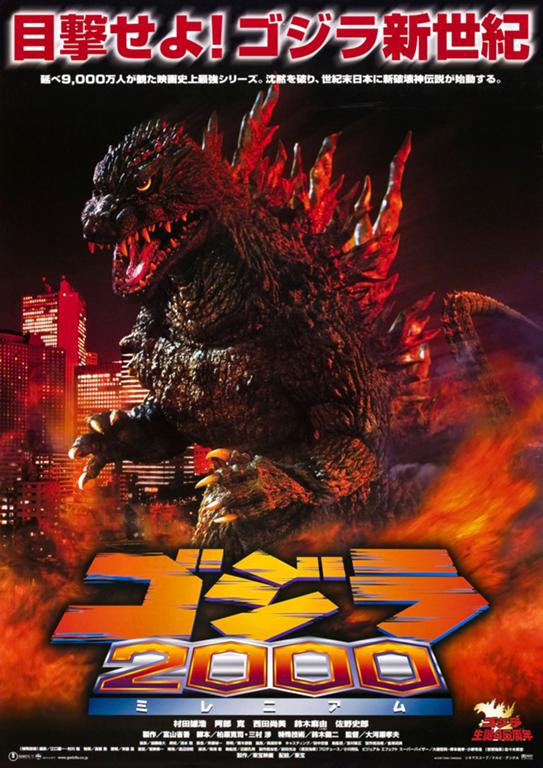
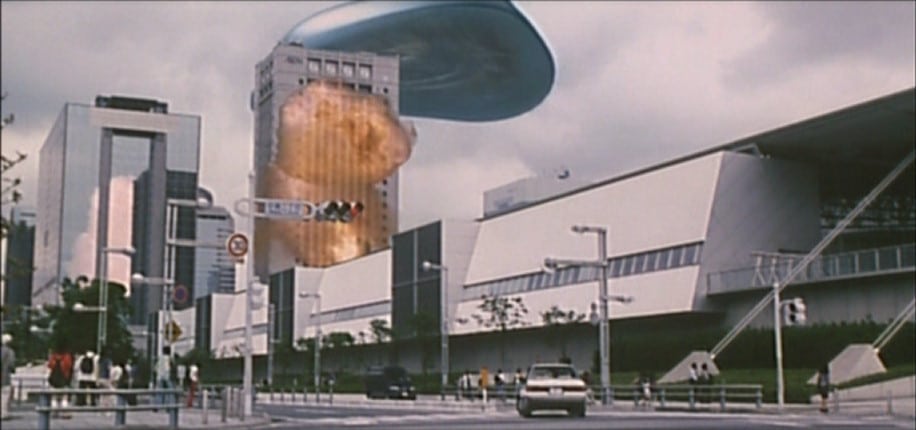
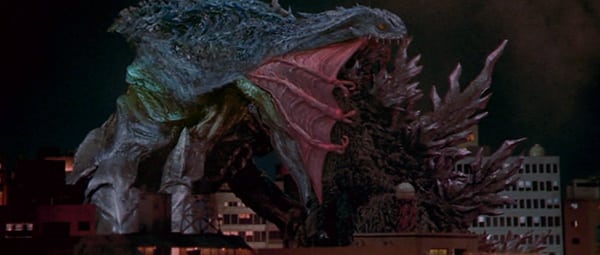
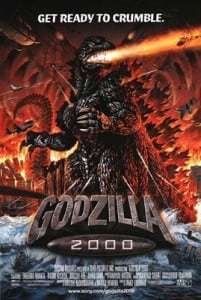


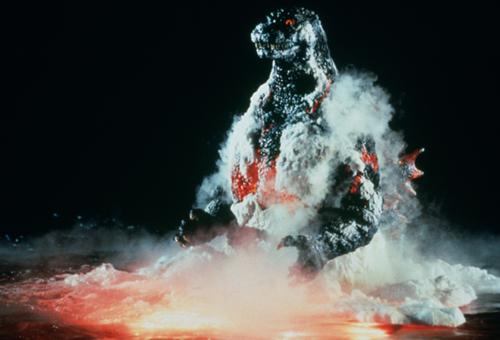
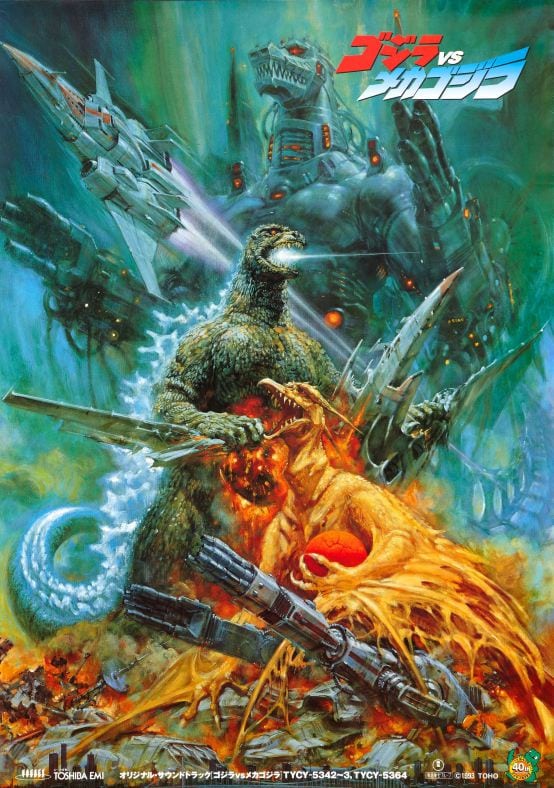
Be the first to comment